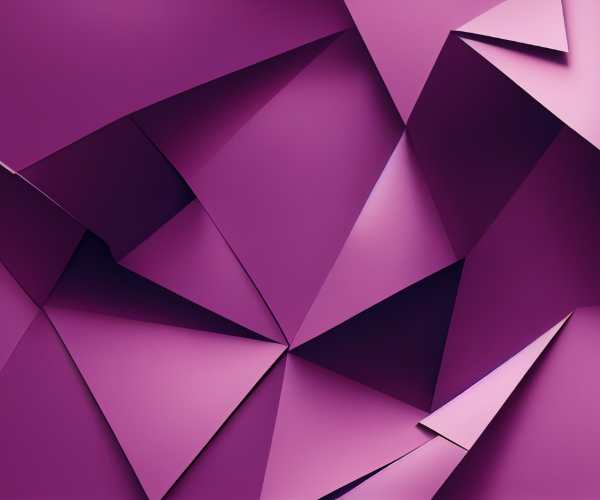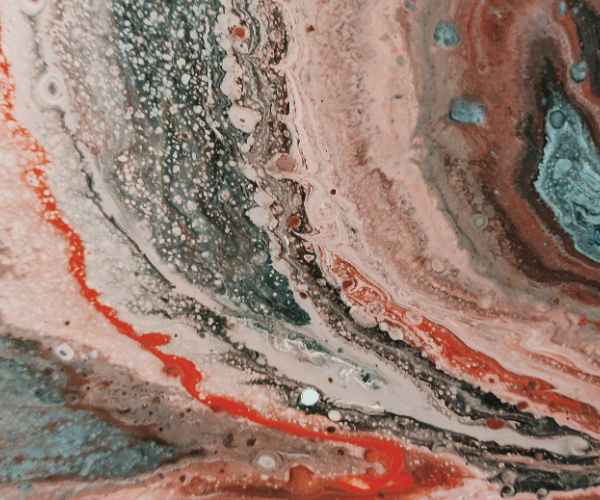Delving into the enthralling segment of character design as part of digital artistry!
This is the domain where imagination is extensively stretched.
Character design does not only focus on the over all appeal of the figure visual, it also entails to adding life by providing a character, story and emotions to it for the audience to connect with.
To address the characters from Movies or games or Animations that you adore the most .
What keeps you captivated by them?
Is it their signature looks, their relatable life events that they go through or maybe their odd ball moments?
The inner workings of character design are all primarily to add to the storytelling.
Be it the hero who’s all fierce with their intense gaze or the villain with their mischievous intentions, these minute details play a pivotal role to the story that we are a part of.
The greatest exemplification of how this has now changed is the use of digital art since it now gives the artist a practical phase to work with mixing all types of colors shapes and styles.
With just a click or two you can adjust the proportions or new palettes and a variety of displays are just trivial when compared to traditional media.
The First Time I ventured into digital art it was sort of an amusement.
It seemed to me as if I was being handed the keys to an infinite treasure chest full of tools that were all full of colors that had no end and opportunity in them.
That kind of freedom not only specializes in sharpening the creativity of an artist but also assists them in perfecting their characters the way which once was extremely laborious and time consuming.
It’s a thrilling adventure that promotes anomaly and entrepreneurship spirit.

What is Character Design?
Character designing is about focusing more on a character’s personality and appearance and brings those attributes out into a visual form suitable in a game or movie, or even a comic or an illustration.
In simple terms, it is the art of transforming an idea into a visual.
You’re trying to create something that tells and conveys a unique story not solely focuses on its appearance.
Complex narratives and emotions have the potential to be expressed without a single word being uttered, character designing can accomplish this with ease for example.
The clothes a character wears reflect their personality and can embody a certain sociocultural background, while their confident or insecure stance would be an expression of their body confidence.
It was in the early days of my career as a character designer while studying it turned out that perhaps the most interesting method would be to watch how much the character’s mood and motivation goes up and down with just a slight alteration in the expression.
When one of my colleagues refrained from smiling so much, I understood that twisting the mouth of a character who was supposed to have a twinkling smile into something like a lowered mouth would change the character’s perspective from wide eyed cheerful to pensive.
That opened my eyes to how personality and emotions are represented through design.
The creation of characters in this digital age.
The artistic techniques alongside the character designing have perspective as well through every technological advancement, which means that character designing is a timeless art.
Character design usually makes use of physical tools such as paints and pencils first. This however, slows down the overall process of ideation and testing of characters. The medium itself is restrictive to say the least.
Artists would invest a great amount of time, anywhere from weeks to months on a single character by sketching tens of designs in the beginning.
But recently, a new form of technology came into play and has allowed artists to revolutionize their way of life.
Art has been allowed to flourish and grow because traditional methods are a thing of the past now. Every individual is now able to freely edit, copy and innovate upon their designs.
During my time at a workshop I remember an artist who had just made the transition to the digital medium explaining his process to me.
The artist showed me how to use layers in a digital painting to quickly adjust specific elements without altering the complete picture.
It was remarkable, to say the least, to see how much faster technology had made the creative process and how much freedom it gave the artist, allowing them to explore styles they wanted without being bound by traditional mediums.
Currently character design is a lot more versatile than just one static process, today we can alter the characters with the unique narrative that we have in mind to tell.
Tools and Software for Digital Character Design:
Choosing the Right Software
First and foremost, every artist must consider what type of software they wish to use for their character design. This end of the spectrum has its own list of applications that you will prefer over others.
Adobe Photoshop single handedly is the most used and recognized software in the art industry.
The sheer volume of tools and features it possesses makes it more than ideal for a multitude of designs and illustrations but can prove to be a bit to take in for beginners. Moreover, the subscription based model may also not be best suited for everyone’s finances.
Procreate has rapidly conquered the market with the help of illustrators and character designers.
It has been enhanced and with its brush engine and user interface is brilliant for quick sketches and detailed pieces alike. Having used Procreate extensively, I can say that it is simple and easy for you to work on the go with an IPad.
Clip Studio Paint is another brilliant option, mainly for comic and manga artists.
It contains a wide array of features bolstered for character creation including 3D figures enabling an in-depth visualization of their perspective and poses. While it may not be as renounced as photoshop or procreate, its certain features that set it apart make it a diamond in the rough.
The Crucial Software to Create Characters
So as we have mentioned previously, software doesn’t end there. There is the whole arsenal of digital tools one would want to enhance their character design further.
For every digital artist graphic tablets are must-have tools.
These devices allow a more realistic experience of drawing to mimic that of conventional art, albeit maintaining the accuracy that comes with being a digitally created piece of work.
‘’When I first used a graphic tablet, it was such an unreal feeling. I felt as though magic was happening, each swipe made the screen fill with life. My characters were being created in front of me!’’
One more crucial component is a good stylus.
The one which you can hold and one that responds well is the one that greatly affects the functioning of your other tools.
I have seen a lot of them, but that one brand which I have never forgotten was the one that evenly balanced the pressure needed and comfortably designed.
A good quality monitor is also worth the expense as it will enable you to more clearly see your work and if you have a character, get as many shades as possible that make them unique.
Once the right tools have been acquired the only thing that will be limiting you is your imagination which is what character designing whereas different tools enable you to make the process not only efficient but more fun and fulfilling.
Character Building Techniques For Designing the Best Characters
Explaining Shapes and Silhouettes.
Designing characters is a bit easier when starting off with shapes in mind.
Characters are made up of shapes right from when they are built.
They are imperative as to how a character would be viewed and so much could be expressed without even having to say a single word.
For example, a character with a circular shape can seem more sociable as compared to an individual who’s shape is more carved.
Let’s take some time to think about characters we like.
To illustrate, consider Baymax as a character in the movie Big Hero 6 by Disney.
He has been designed in a way which is quite huggable as well as not too intimidating with the more rounded features – this was done so that the viewers would be able to relate to him more as a healthy caring companion.
Contrary to this, characters like Dr. Doom from Marvel Comics depict a more heavily styled, shaped and carved silhouette indicating a sense of power.
Isn’t it quite interesting that a character silhouette can tell a person a story, picture and a video?
The ability to silhouette match illustrations of any two or more characters is vital especially when trying to identify a character when put against strong memories.
The silhouette is so powerful that even the proudest silhouette can be easily determined even when the sun disappears.
During the initial phases of my personal project, I was fixated on creating a custom character, and Only after going through multiple shapes and designs was I finally able to develop something that suited my vision.
It was when I started shedding away the excessive ornaments from the design, where the distinctive outline of the character began to shine through.
So as an exercise, try drawing your character as a solid black figure.
If the black figure visually explains the characteristics of your character, then it’s a positive affirmation that you are doing great.
Different shapes could be useful since they would determine a nice basis for practically all character designs.
Character Designing Through Color Selection
One of the most famed methods of enhancing your character design; color selection! Shall we begin?
Color is far more than just something that looks appealing. It’s an efficient means of expressing emotion and personality traits.
A character’s impression could be altered greatly because of the selection of colors done by the audience.
For instance, strong feelings such as excitement or even anger can be associated with warmer hues such as red or orange.
Elaborating further, calmness or sadness is generally associated with cooler hues like green or blue.
Consider Elsa from the renowned film Frozen.
The color palette of her character starts off with blues as a representation of ice. Along with signifying her powers, it also symbolizes her personal growth, starting from loneliness and culminating in self acceptance.
When building up your character make sure to think through what feeling you want to express through their colors.
I usually make a mood board with some color samples that relate to the character and their story.
Each character’s story can also be multi-colored. Their interior thoughts and emotions are portrayed in how they mix different colors together.
For example, if I want to craft a character who is more of an enigma and a very intriguing one, then I would probably choose darker tones with a bit of bright shades just to add some flair.
A good challenge is to select a character and change its colors completely.
Notice how this shifts your idea about the character.
This kind of brainstorming can serve for stunning realizations and assist you in developing the most suitable color scheme for your visuals.
Do not hesitate to go deep into colors!
Keep in mind, it’s your world of creativity—draw it in whichever manner you wish.
FAQs
Which software is the best for character design?
Choosing the right software for character design one could say is some kind of a chore as there are so many out there which are overwhelming enough.
Adobe Photoshop: Consider it the fundamental tool in the world of art.
It’s perfect for painting and illustration because of its impressive functionalities.
The tools and brushes included in Photoshop are beyond amazing and give you the absolute best when designing a character.
But it can be a little on the expensive side and might be challenging for first easy and straightforward usage.
Procreate: Procreate easily wins my heart but I am an avid iPad user so of course, I am biased.
It has a friendly user interface and has plenty of features including thousands of brushes to choose from.
I find Procreate amazing at how effortlessly I am able to tweak layer designs on the character while sketching it for the first time and hence I ended up using this software.
Clip Studio Paint: This one is especially popular among comic tattooists and illustrators as well students.
Clip Studio Paint offers excellent linework tools, and 3D is incorporated in the use of Models as a step forward in character shaping design purposes.
It is cheaper than photoshop and is good for people who counter or are more likely to Be associated with character focus.
I recommend considering what exactly you need in the software and how you intend to use it when you Set out to Finding software of your preference.
Where you Can, test out trial versions to compare and decide exactly what feels right for you.
At the end of the day, it all does come down to the style and workflow that one follows to paint.
How do you intend to refine your character design skills?
Sharpening your character design skills is not easy; it requires practice, experimentation, and most importantly, it should be fun.
So I was told at the beginning of my art career – draw every single day even if it is for a brief period.
So, here are a few tips to help you zoom right on:
Learn by Doing: Spend time examining the individuals and places around you – you never know what you will find.
Remember to pay attention to varying shapes on the body, the emotions on someone’s face, and even the clothes that they wear.
I always try to take a sketchbook with me in order to draw hilarious poses or cool outfits that I can see while walking around outdoors.
Examine Other Characters: Check out the characters in your favorite game or cartoons or movies.
Figure out what makes them so interesting.
Could it the color scheme? The outline of the person? Or how do they feel?
Imagine them redesigned in your style, observe how their essence may be expressed that way.
Ask for Help: Expose your artistic works to artists around you or expose them in an online group community.
Constructive blame can help in gaining perspective on certain things which you may have missed.
Joining an art community was the first step, and the suggestions I got in my designs became the best ones.
Your Favorite Online Courses: Everyone loves free stuff.
In modern times, resources such as Skillshare and Youtube offer a plethora of educational content for aspiring character designers.
Take your time and pick a few that catch your interest, try to dedicate some time each week towards improving your skills.
Always remember that improvement is a gradual process, thus trust the process.
Motivate yourself with each success you get, again it could be something very insignificant, your limitations are entirely in your head.
This raises a question, can skills acquired through traditional art forms be implemented into the world of digital character designing?
Definitely!
As candid as the profession is, most of the fundamental skills remain consistent across traditional and digital art including character designing.
Being proficient with a pencil and paper provided me the necessary knowledge that was vital for me to excel in the field of digital art that I transitioned into.
Let’s discuss how traditional art can serve as a differentiation factor in improving your character designing skills in the digital world.
If you have ever dabbled with figure drawing or studied about human anatomy in your traditional art classes, then designing in the digital space will become an easy task for you as you have the required knowledge for it.
Knowing how to create compelling and believable characters becomes tremendously easier once you have the basic knowledge of how the human body functions.
Having experimented with raw paints, there is a high chance that you have developed an understanding of color theory.
In the Digital world being color conscious photoshop tools will assist you in assembling balanced color palettes effectively.
I usually apply the knowledge I gained through color mixing in the digital realm to produce stunning palettes.
Sketching: Most artists illustrate proficiently on paper and their digital skills seem to complement their sketching abilities quite well.
By means of a tablet, I experience the versatility of layers and undo commands while still getting the sensation of sketching which can only be associated to paper.
Become accustomed to digital painting while still allowing your traditional skills to shine.
They will add value to your character design and help with a better and enjoyable transition.
Conclusion
All in all, character creation in particular has been transformed by the introduction of digital art, enabling us to be creative in ways we could never have dreamed of before.
Be it crazy game characters or emotional cartoon protagonists, the digital format allows us to portray ideas in a more colorful manner.
I would recommend you to try with different types of techniques and approaches.
Don’t be afraid to risk, the more daring you are the more you will find your original voice as an artist.
And most importantly, share with me your characters and their stories in the comments!
I am eager to know what you have been creating and what your artistic journey is like.
Let’s stimulate one another and keep advancing as a community of creators.






